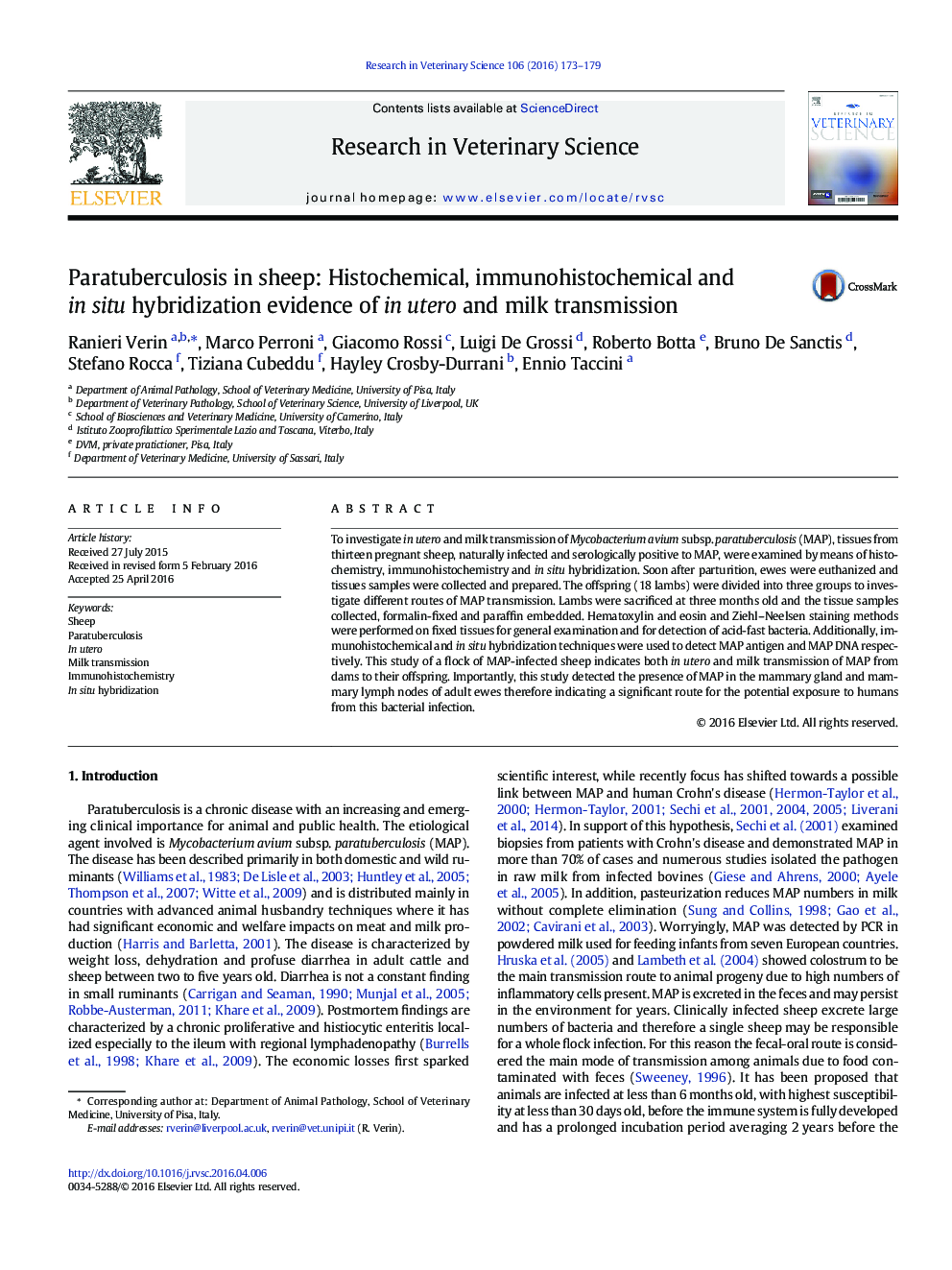| Article ID | Journal | Published Year | Pages | File Type |
|---|---|---|---|---|
| 5794499 | Research in Veterinary Science | 2016 | 7 Pages |
â¢Demonstration of in utero transmission of ovine paratuberculosisâ¢Demonstration of ovine paratuberculosis transmission via infected milkâ¢Detection of MAP in mammary glands and mammary lymph nodes of adult infected ewesâ¢Detection of MAP by morphology, immunohistochemistry and in situ hybridizationâ¢Suggesting ovine milk as potential transmission route for exposure of MAP to humans
To investigate in utero and milk transmission of Mycobacterium avium subsp. paratuberculosis (MAP), tissues from thirteen pregnant sheep, naturally infected and serologically positive to MAP, were examined by means of histochemistry, immunohistochemistry and in situ hybridization. Soon after parturition, ewes were euthanized and tissues samples were collected and prepared. The offspring (18 lambs) were divided into three groups to investigate different routes of MAP transmission. Lambs were sacrificed at three months old and the tissue samples collected, formalin-fixed and paraffin embedded. Hematoxylin and eosin and Ziehl-Neelsen staining methods were performed on fixed tissues for general examination and for detection of acid-fast bacteria. Additionally, immunohistochemical and in situ hybridization techniques were used to detect MAP antigen and MAP DNA respectively. This study of a flock of MAP-infected sheep indicates both in utero and milk transmission of MAP from dams to their offspring. Importantly, this study detected the presence of MAP in the mammary gland and mammary lymph nodes of adult ewes therefore indicating a significant route for the potential exposure to humans from this bacterial infection.
